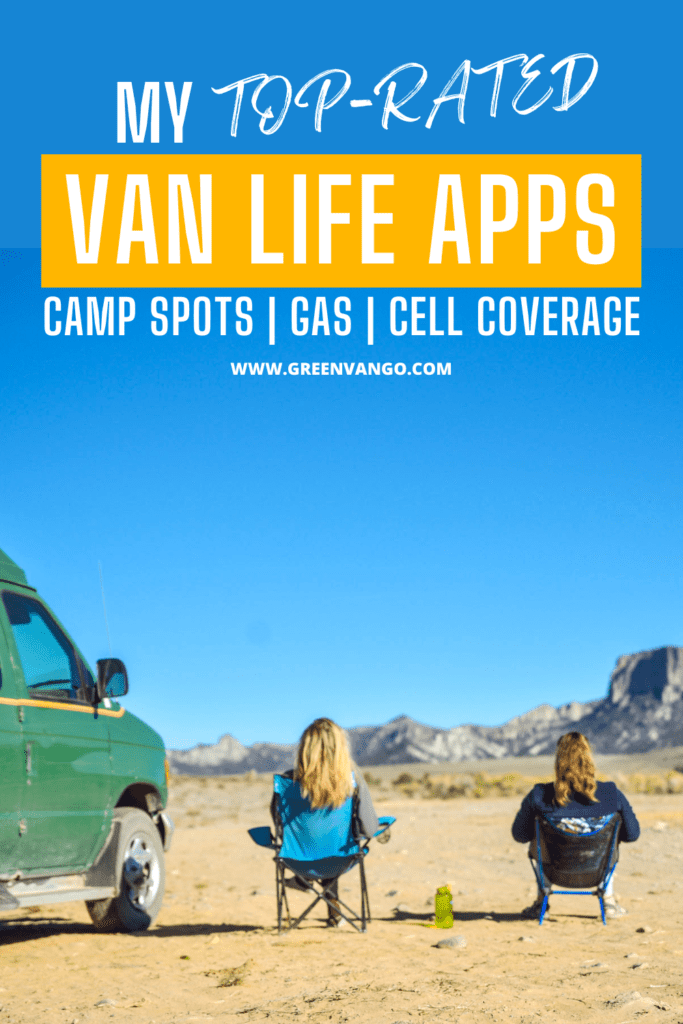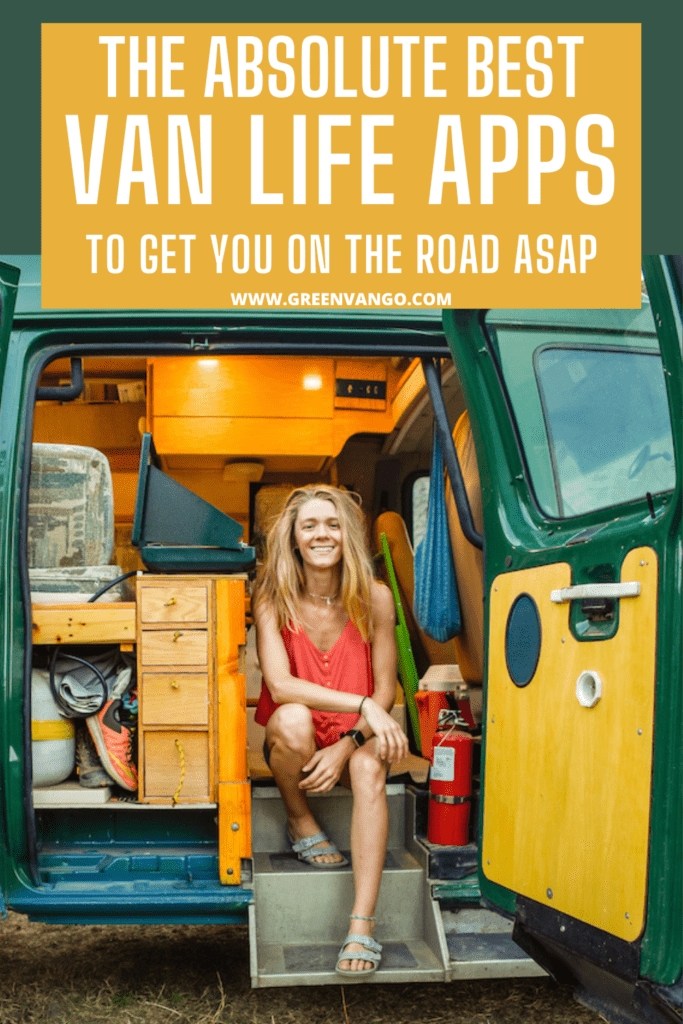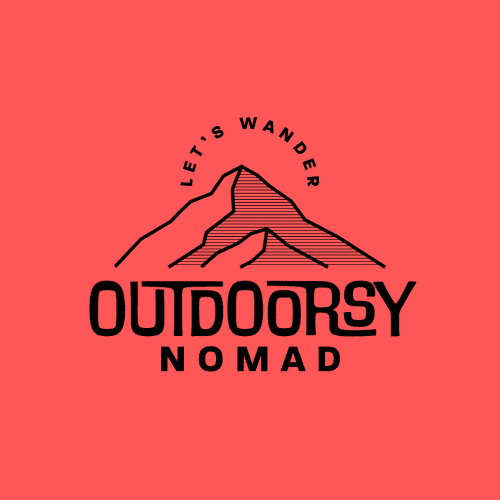Okay, so we all love the idea that van life allows us to disconnect, get away from our devices, and take a break from the constant notifications and updates, right? But let’s face it, folks: where would we van lifers and road trippers be without our van life apps?
In this article, I’ll show you my favorite apps for van life and why I love them so much. Let’s dive in!
Table of Contents
Best Apps for Finding Campsites
Undoubtedly one of the most important (and sometimes difficult) things for any van lifer to do is…park your van! Sometimes it can be tough to find a good spot, especially in a new place or during peak season when places fill up fast. Luckily, these van life apps have you covered.
iOverlander
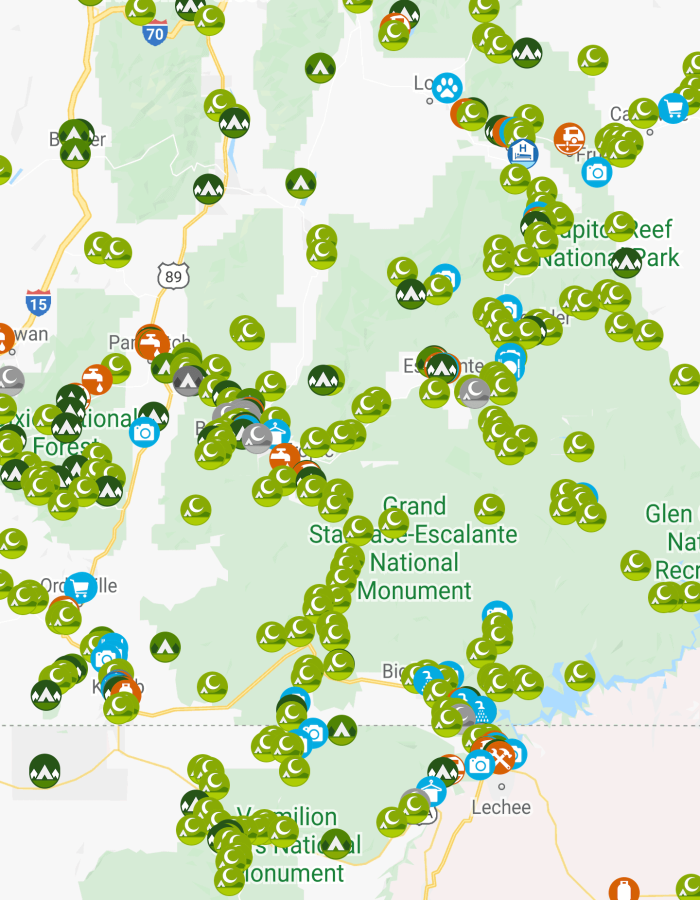
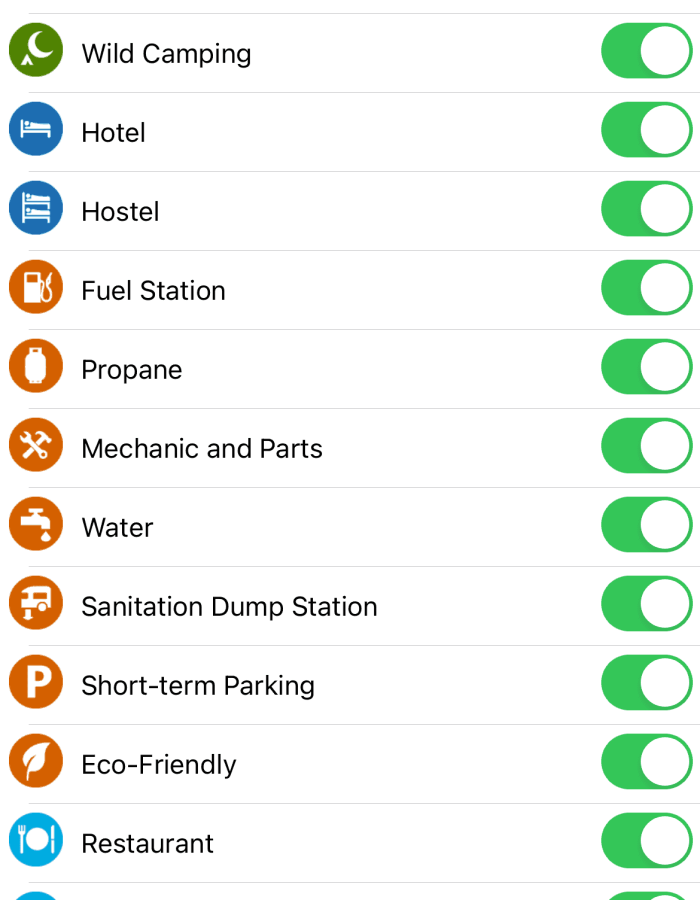
Probably one of the best-known van life apps out there, iOverlander is an all-in-one van life solution that can help you find free campsites, gas, short-term parking, pump-out and dump stations, mechanics, water, tourist attractions, food, and more.
iOverlander is crowd-sourced, so it’s constantly being updated with new and relevant information. It’s especially useful for finding campsites, as users upload photos, GPS coordinates, and reviews of their favorite (and not so favorite) spots.
Compared to other apps like it, iOverlander has more reviews and more photos of locations. Another nice thing about iOverlander is that it seems to work more reliably when cell service is spotty. It tends to load even when other apps won’t.
Cost: Free
Download On: iOS and Google Play
Sekr (The VanLife App)
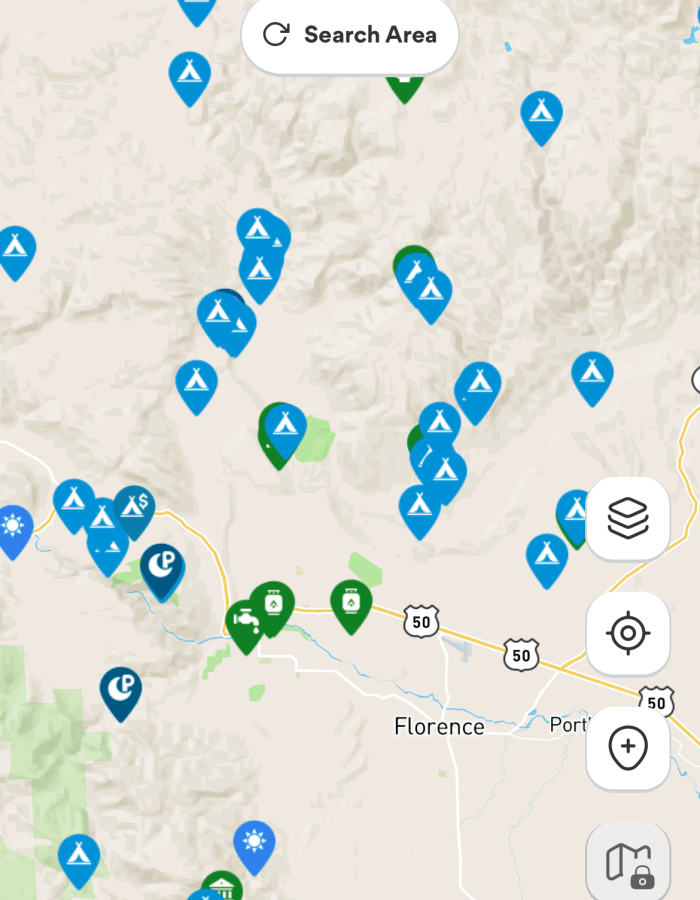
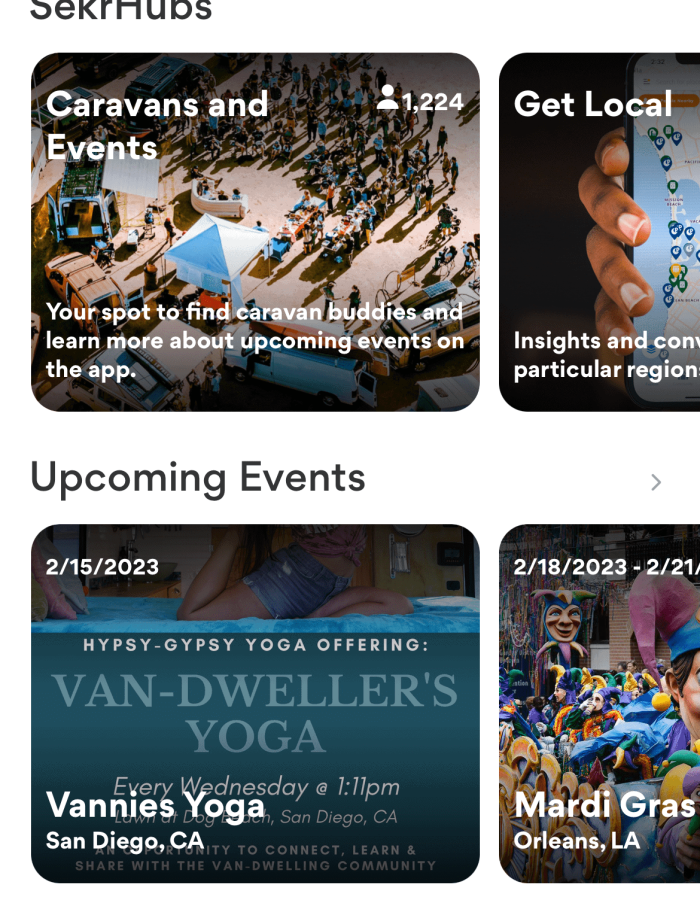
Sekr used to be called The Van Life App, but they have since rebranded and added a bunch of cool new features. This is a woman-owned and operated company, and the app was built by van lifers.
Sekr can help you find free campsites, locate national parks, free wifi, and more. Compared to iOverlander, Sekr has fewer reviews and photos of locations, but that’s only because it’s a newer, crowd-sourced app and hasn’t been used by as many people yet.
The nifty thing about Sekr is its Community Calendar. You can learn about upcoming van life meetups, events, and caravan invitations, or just connect directly with other van lifers to chat and swap info.
Cost: Free or $1.99 per month or $18.99 annually for Sekr+
Download On: iOS and Google Play
Boondockers Welcome & Harvest Hosts
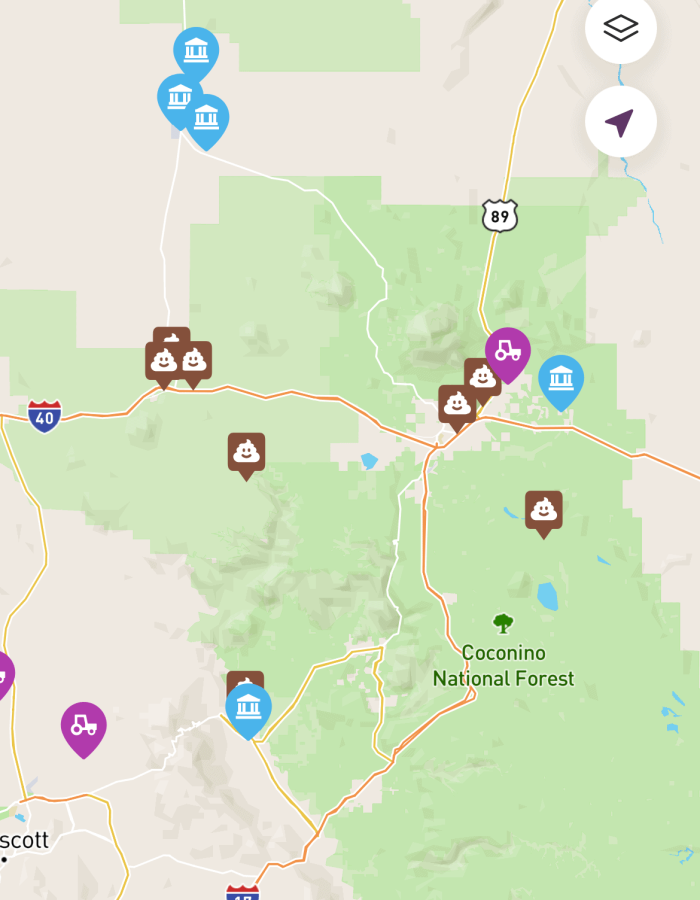
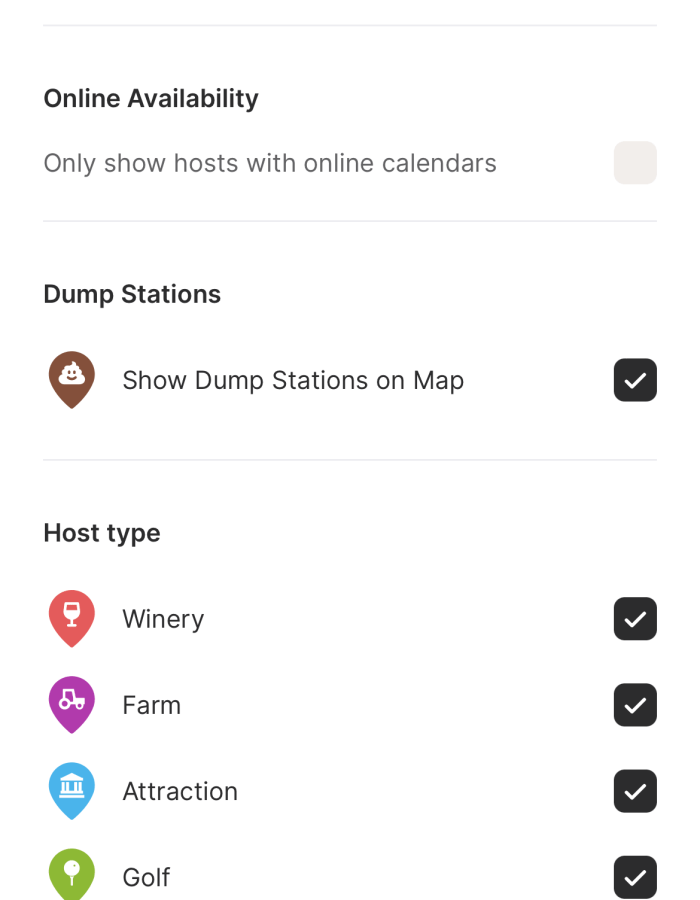
Rather than directing you to free and paid campsites, Boondockers Welcome connects you with people who own private property and are open to letting you park there.
This land might be acres of private land, or it might just be someone’s driveway or backyard. You need to have your own self-contained toilet to be eligible to park in these spots, but it’s great in places where there isn’t a lot of dispersed camping.
With a Harvest Hosts membership, you get access to unique camping spots in wineries, breweries, golf courses, distilleries, farms, and even museums. You can also bundle the Boondockers Welcome app with your Harvest Hosts membership and save 30%.
Cost: $99/year (Harvest Hosts) or $79/year (Boondocker’s Welcome) or $169 (Both)
Download On: iOS and Google Play
Best Apps for Finding Gas
After camping, the next-most important thing for van life is finding gas—your adventure is going to come to an end pretty quickly if you don’t. Here are my three favorite gas-finder apps.
GasBuddy
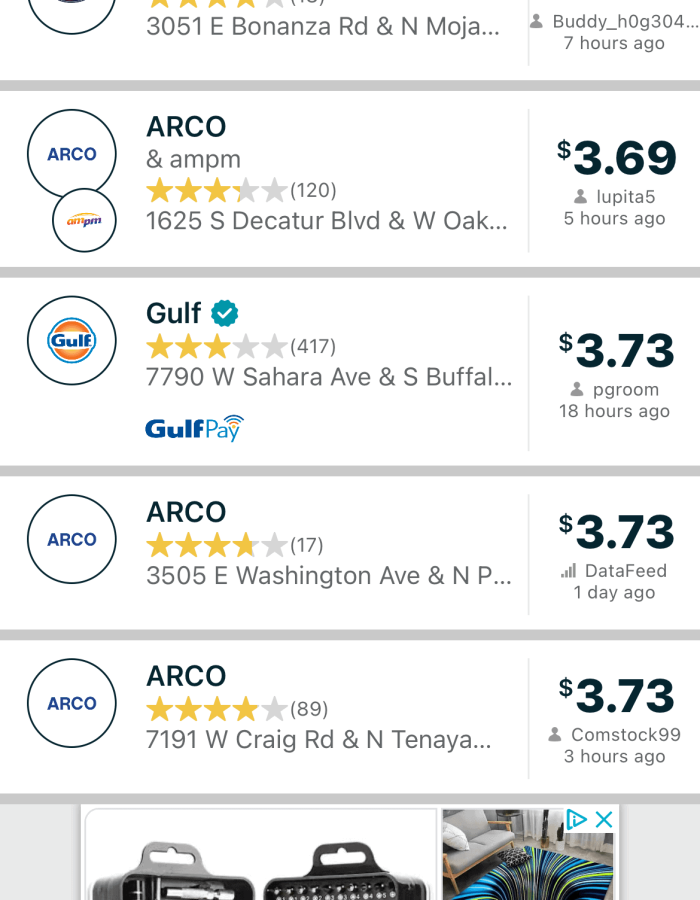
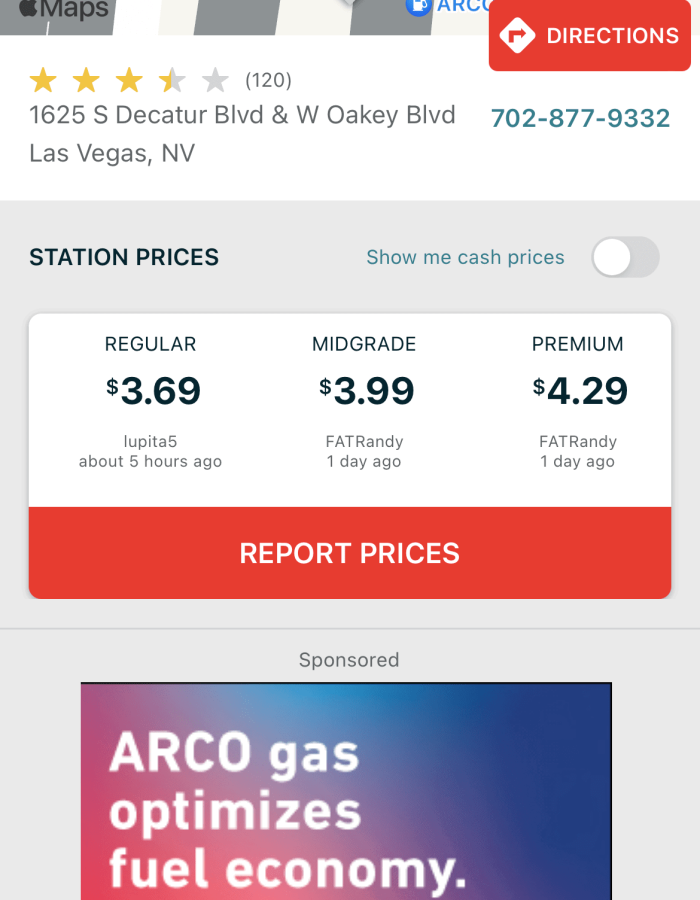
This app is awesome not only because it helps you find gas, but because it helps you find the cheapest gas. Gas is going to be one of your biggest expenses on the road, so saving where you can is crucial.
Gas Buddy has an easy-to-use interface that you can use in a pinch while driving (not that I endorse that, but things happen!) Just open the app and it automatically loads the area you’re in, plus the nearest gas stations and gas prices. No taking your eyes off the road to type or search!
You can pull up a list view and sort by price and location to figure out the cheapest vs. the closest option. This is handy if you think you can make it a few more miles and might save more at the next pump.
Cost: Free
Download On: iOS and Google Play
Upside
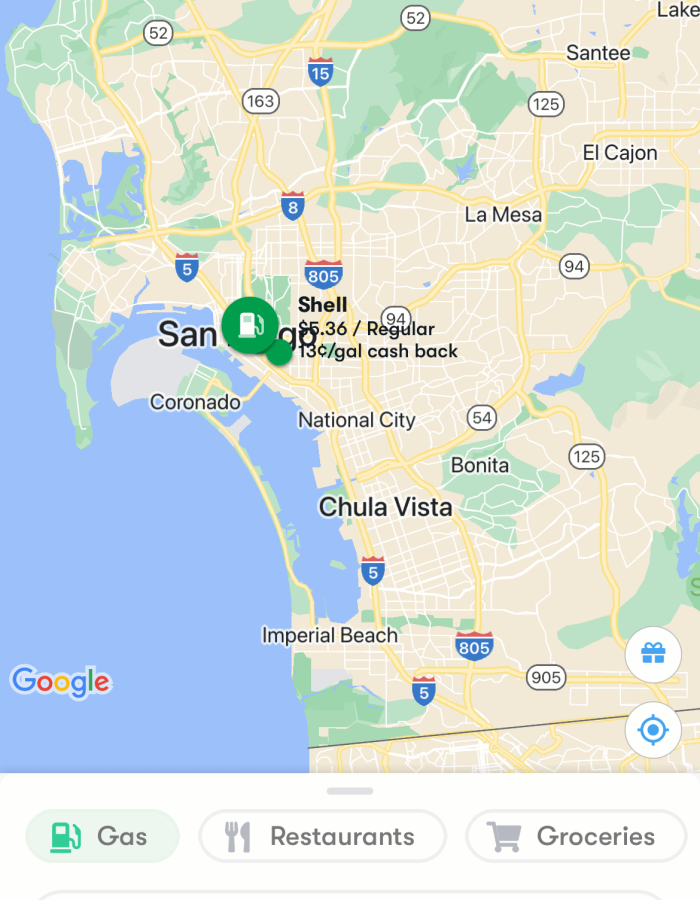
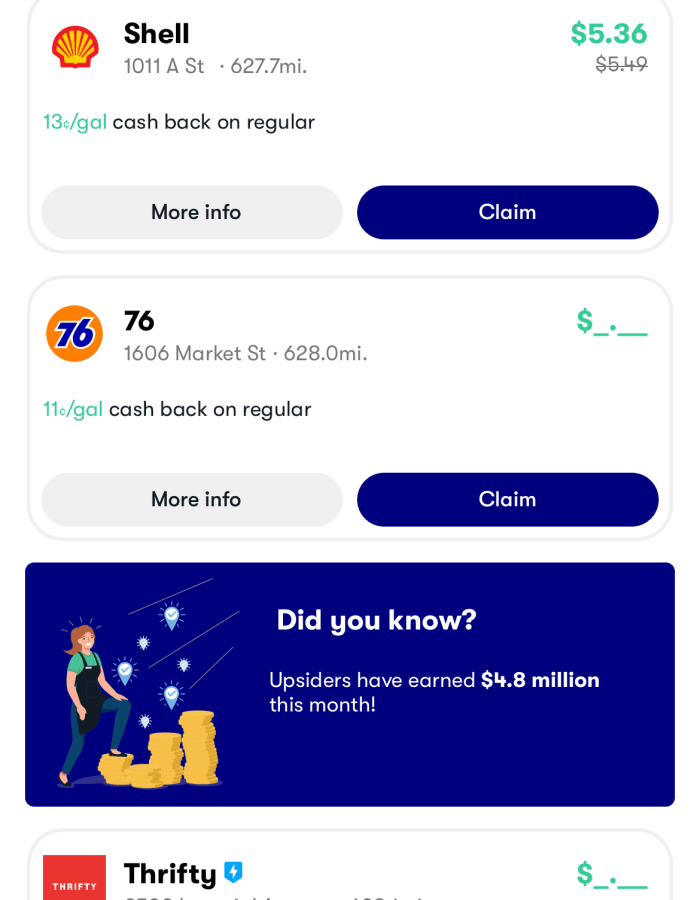
While not technically an app for finding gas, Upside is a great app for van life because it gives you perks. Upside partners with certain gas providers to give you cash back when you fill up your camper van—up to $0.15c per gallon!
Upside does have a search feature, but not all gas stations qualify, so it may not show you everything in the area—use it with Gas Buddy or Google Maps. Recently, Upside expanded its offerings to include restaurants and groceries too for even more cash-back perks.
Cost: Free
Download On: iOS and Google Play
Google Maps
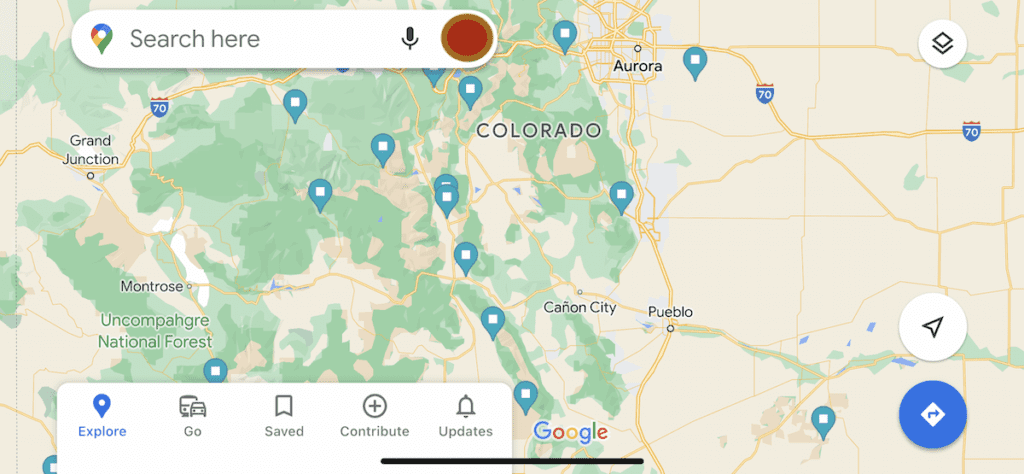
A classic for a reason—Google Maps is great for everything from finding restaurants to finding tourist activities. I included it in the gas apps section because it is particularly useful for this—just tap the “Gas Stations” icon to pull up a list of nearby spots.
An extremely helpful feature is “download offline maps”, so you can download a certain region you’re headed to before getting there, and always have map access to the area even if you don’t have cell signal!
Google Maps can pretty much be relied on to have up-to-date and accurate information about places, which is another reason I like it. You can easily share pin drops or latitude/logitude locations with other travelers (since many of your camp spots will probably be on random public lands without official map listings).
Cost: Free
Download On: iOS and Google Play
Best Apps for Finding Cell Service
The third-most important thing for a van lifer after parking and gas? Finding cell service! How are you going to use all your handy apps without cell signal? (Well, okay, most of them have offline options, but still!) Here are some excellent apps for sniffing out service when you’re out in the boonies.
FreeRoam
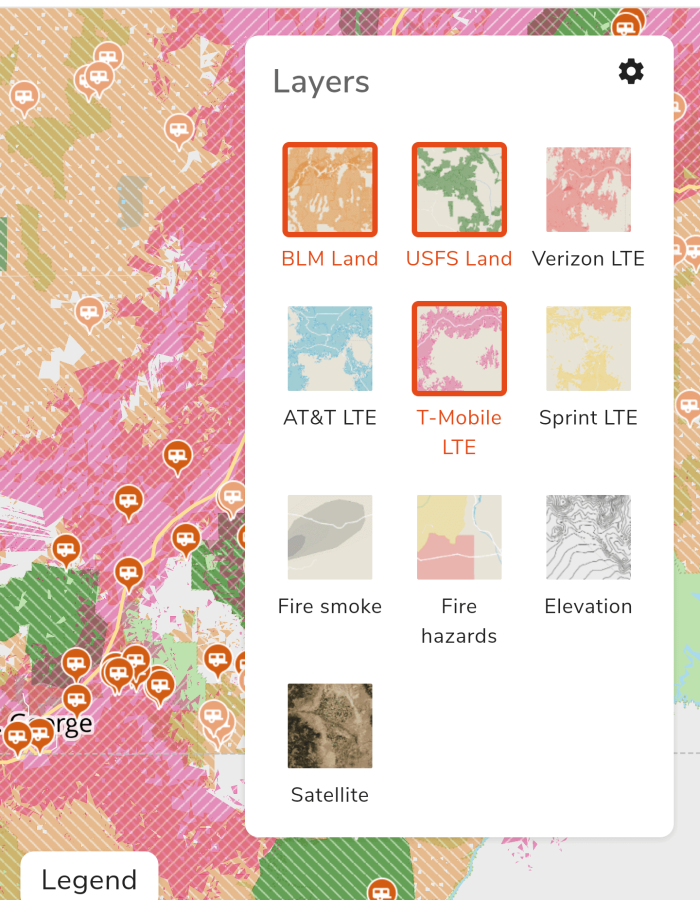
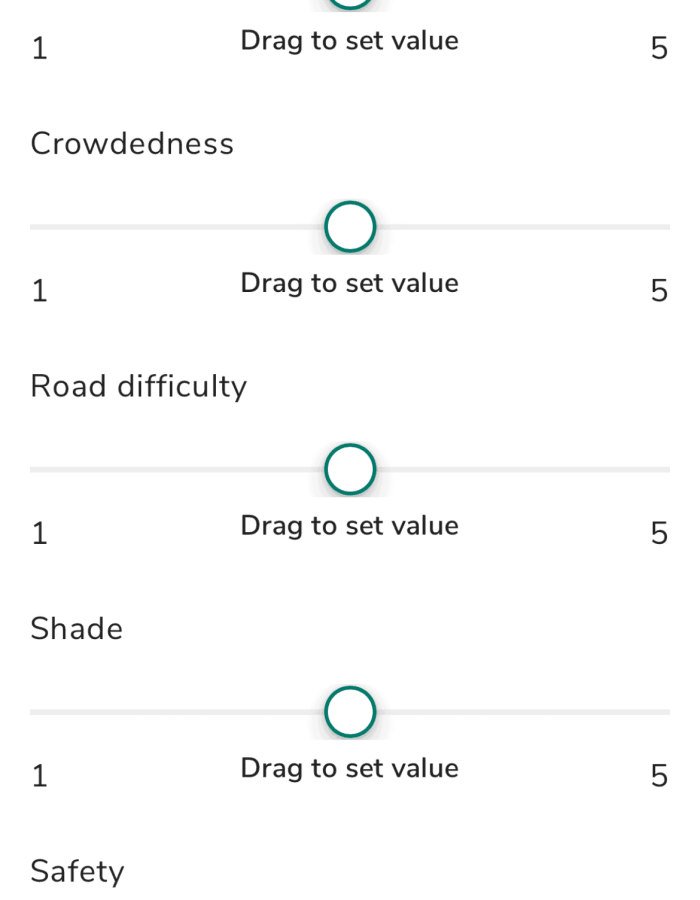
This camping app rivals iOverlander, and could honestly be included in any one of these categories, but I put it here because I love the map filtering options they have, especially the options for cell phone coverage.
You can choose to overlay different filters over any map view, showing you everything from BLM areas to T-Mobile LTE coverage. The best part is, you can combine filters. So you could see, for example, which spots around you are public lands, free to use, and have cell coverage—even if no other campers have ever been there or created a listing!
You can filter the FreeRoam maps by the following options:
- BLM land
- USFS land
- Verizon LTE coverage
- AT&T LTE coverage
- T-Mobile LTE coverage
- Sprint LTE coverage
- Fire smoke
- Fire hazards
- Elevation
- Satellite
The app also lists community events and meetups, or you can turn on your location to see others’ locations and meet up independently.
Cost: Free
Download On: iOS
Open Signal
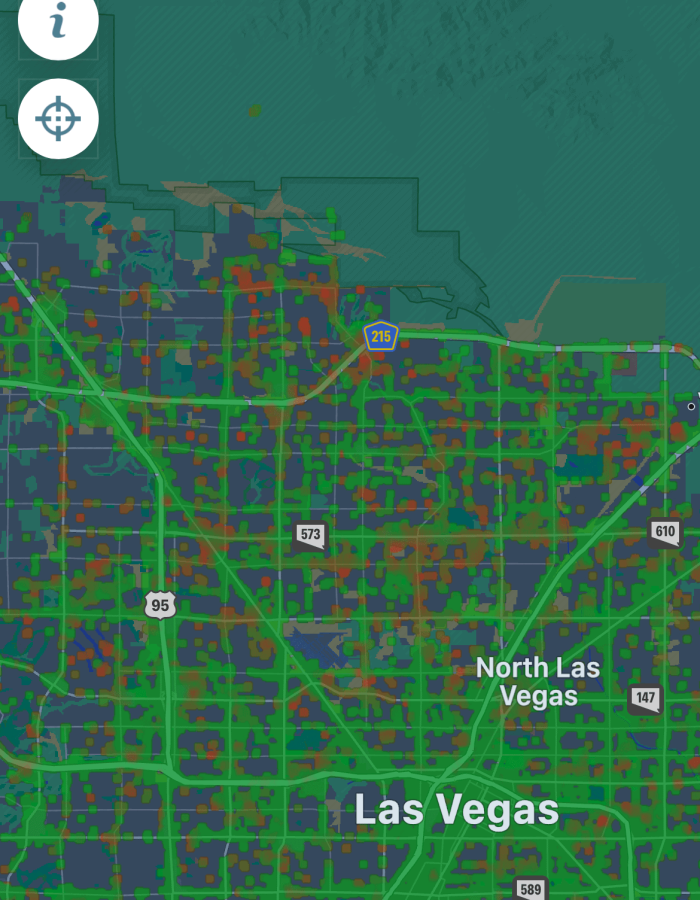
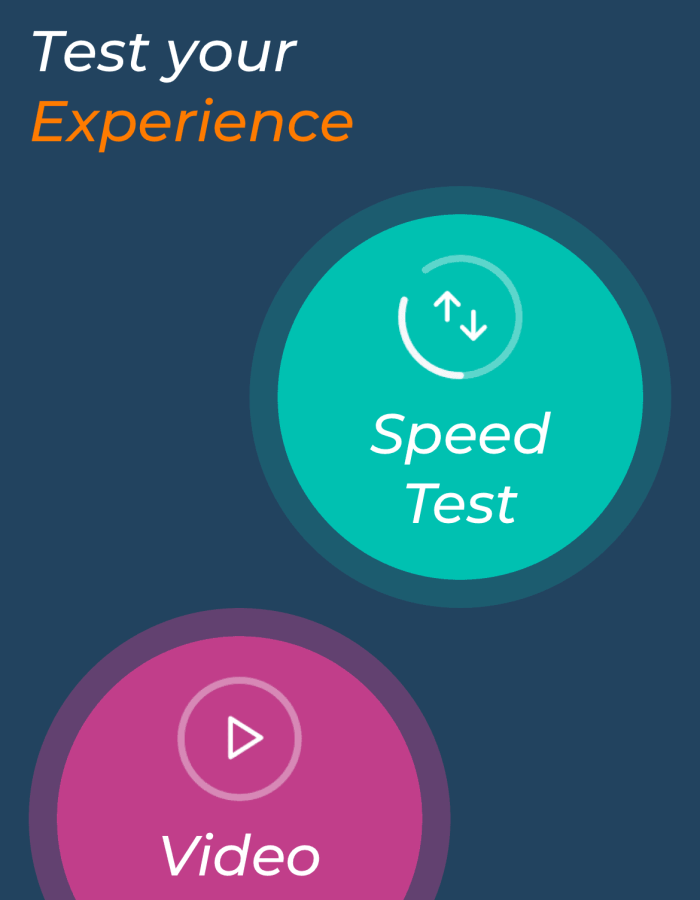
Open Signal is pretty much a must-have for digital nomads and remote workers who need access to high-speed internet (or at least decent cell service) on the road.
Like Free Roam, Open Signal has interactive coverage maps for all the major cell service companies, and can also show where cell towers are and help you run speed tests for video calls.
Cost: Free
Download On: iOS and Google Play
Other Handy Van Life Apps
AllTrails
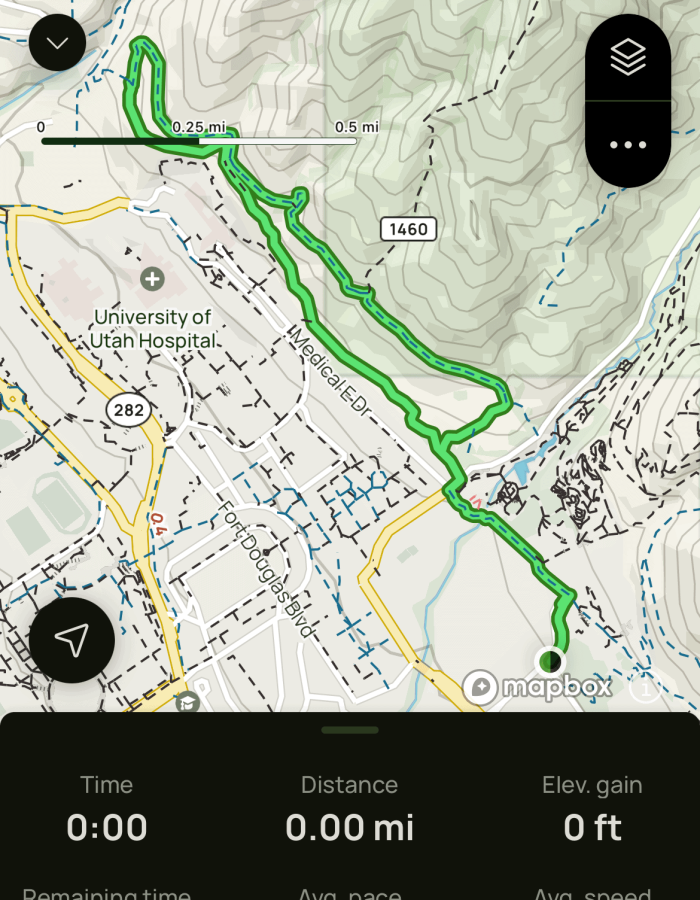
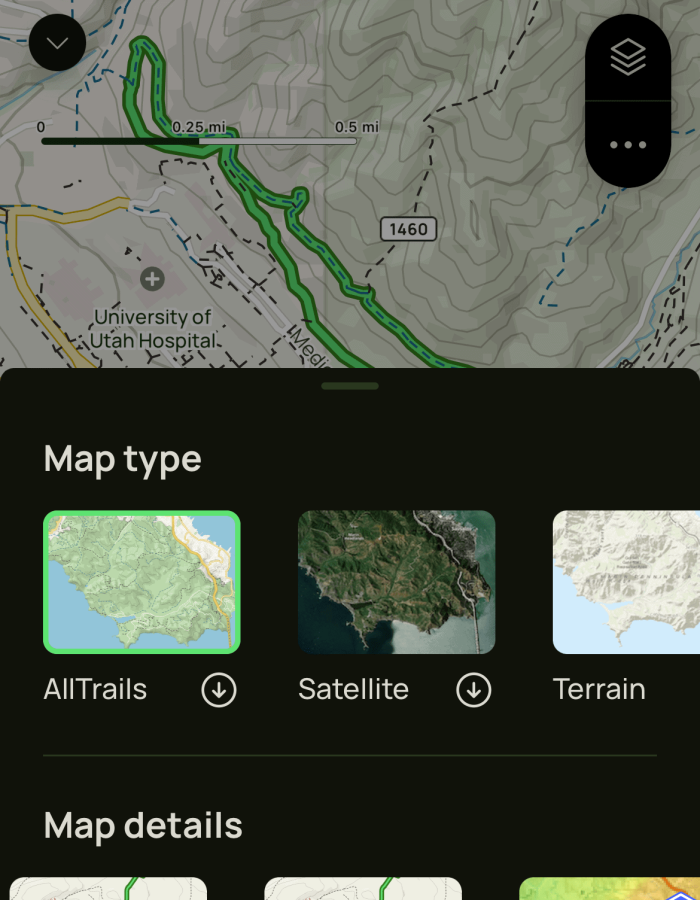
If you’re into hiking, AllTrails is a no-brainer. It has a database of over 200,000 trailheads and hiking paths, plus crowd-sourced reviews, photos, and comments. There is a paid and a free version, and the free version alone is usually enough to get you where you need to go. You can save trail information for offline use later.
If you do upgrade to the pro version, you’ll get cool safety features like notifying contacts if you don’t arrive at your planned destination on time, and the ability to send an SOS signal even when cell service is non-existent.
Cost: Free or $29.99/year for AllTrails+
Download On: iOS and Google Play
Recreation.gov
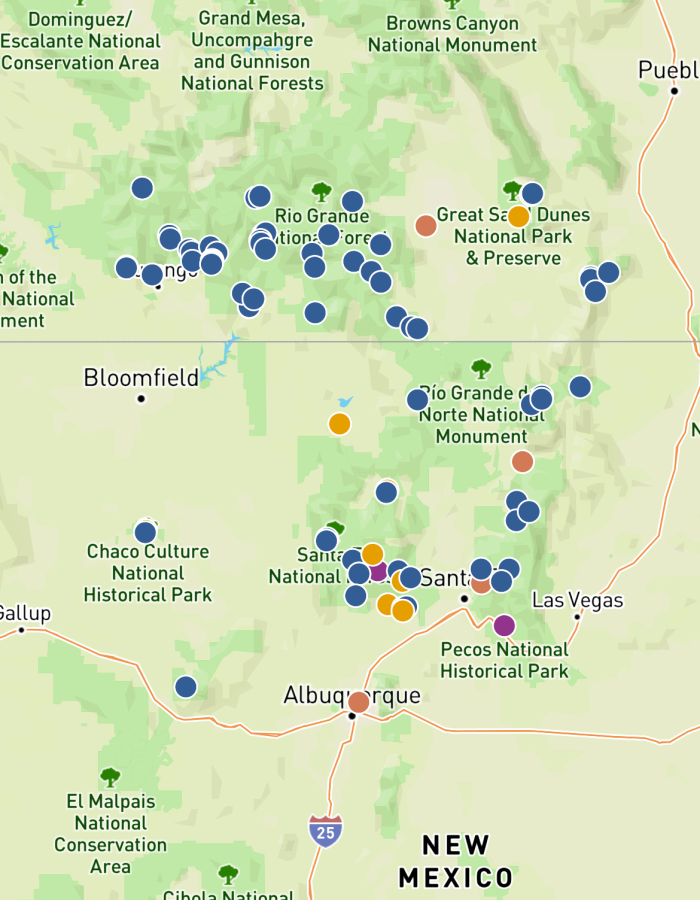
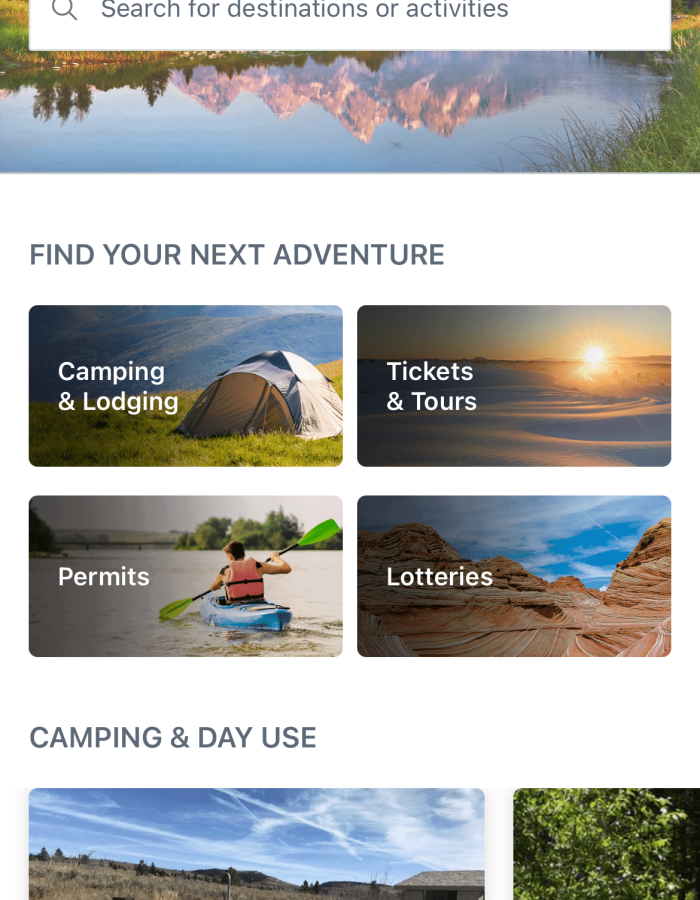
This app, which was made in partnership with 12 separate federal agencies, including the BLM and National Forest Service, is more than just a way of finding national parks. It’s often the only way you can reserve spots at popular campsites or apply for coveted permits like The Wave hike in Arizona.
You can book reservations through a regular desktop computer on the recreation.gov website, but to be honest it’s much easier to do it through the app, and you’ll be able to have your digital tickets and permits in-hand with you.
Cost: Free
Download On: iOS and Google Play
Allstays
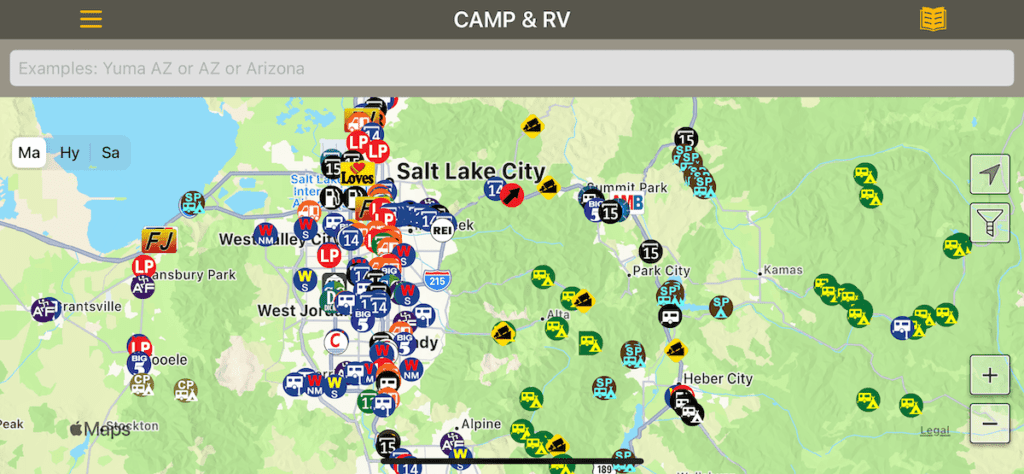
This app was developed for truckers and it’s great for finding overnight parking spots in places like Walmart parking lots, RV parks, rest areas, hotels, motels, and truck stops. It usually lists what facilities are available (showers, restrooms, etc.) in more detail than other apps that handle primarily dispersed camping options (like iOverlander.)
The other great thing is that because it’s focused on truckers, it has features like a height filter, which warns you when bridges have low clearance so you can plan your route around that if you have a tall vehicle. It will also tell you which rest areas are difficult to turn around in and other handy ‘trucker’ knowledge.
Cost: $9.99
Download On: iOS
What exactly IS boondocking?
Boondocking is free, dispersed camping on public land and includes zero amenities or hookups. This means no bathrooms, electric or water hookups, or even trash cans. Boondocking is my favorite type of camping because it’s free, usually feels the most safe (because you’re far away from others), and almost always delivers on a beautiful (or peaceful) view.
Whether you’re in a van, RV, or tent camping, one factor stays the same–you’re completely responsible for bringing any supplies you may need. As Campendium points out, boondocking is not camping in an established campground, camping in someone’s driveway (AKA mooch-docking), or camping in a parking lot. This is because in these scenarios, you have access to resources and amenities, even if you don’t use them.
How do you prep for boondocking?
According to the Bureau of Land Management, campers are allowed to boondock in the same location for a maximum of 14 days within a 28-day timeframe. So how do you prepare to be off-grid for a solid two weeks, assuming you plan to take advantage of the full two weeks? Here’s a quick checklist:
Bring lots of water, more than you expect to need. Even if you hear that there’s a river, lake or some water source nearby and you’re planning on just using a water filter, it’s still a best practice to be over-prepared in terms of water.
Download the Google Maps area that you’ll be in while you still have cell service. There’s a high chance you won’t have service at your boondocking spot, but you’ll still be able to navigate the area with an offline map.
Have a full tank of gas. You may find upon arrival that your planned spot is already taken–sometimes this means driving many extra miles down Forest Service roads to find a new spot. Here’s how to calculate your gas costs.
Park in a direction where you can easily exit and also have privacy. Some boondocking spots can be pretty out in the open, but positioning your van to have a quick exit and some privacy behind trees, can always increase comfort levels.
Pre-plan your meals so you don’t risk running out of food. It’s easy to buy miscellaneous groceries (I do it all the time) but meal planning is less wasteful and reduces risks of miscalculating what you’ll need.
While these are my personal favorite boondocking apps, I recommend exploring on your own to find one that may suit your needs better! Everyone has their own unique van life experience, which may require different camping needs.
Summing It Up
Van life apps are great if you’re new to van life and need a little guidance. Before you get out there on your next road trip and disconnect, make sure you download these apps so you can at least stay connected to the crucial stuff you need!
Save on Pinterest!
